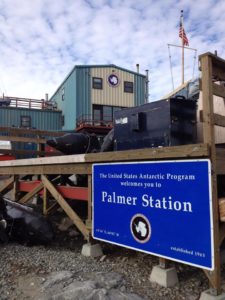Researchers map the genetic machinery behind a natural anti-cancer compound from Antarctica for the first time
 Scientists have identified the bacterium that produces palmerolide, a compound discovered in sea squirts living in Antarctic coastal waters that could potentially treat human melanoma, the most dangerous form of skin cancer.
Scientists have identified the bacterium that produces palmerolide, a compound discovered in sea squirts living in Antarctic coastal waters that could potentially treat human melanoma, the most dangerous form of skin cancer.
Researchers first isolated palmerolide in 2006 from a sea squirt living on the ocean floor near Palmer Station (WAP USA-23) on the Antarctic Peninsula. They suspected the compound must be produced by symbiotic microbes living in the sea squirt’s tissues but couldn’t identify the specific microorganism that was producing it.
By sequencing DNA from all the microbes inhabiting that sea squirt species, scientists have now identified the organism that makes palmerolide. It’s a previously unstudied bacterial species called Candidatus Synoicihabitans palmerolidicus that has yet to be cultured in a lab.
The researchers also mapped the specific genes within that microbe’s DNA carrying the instructions for making palmerolide. It’s the first time scientists have identified the genes responsible for making a known natural product found in Antarctica.
Thanks and Credit to: The Antarctic Sun Magazine
Read more at: https://antarcticsun.usap.gov/science/4719/?fbclid=IwAR371tv4Sfn-24U82hwhPZJrCLjcH8x894K4VWXLQ90_TKKv6p1rlBO_qnA
